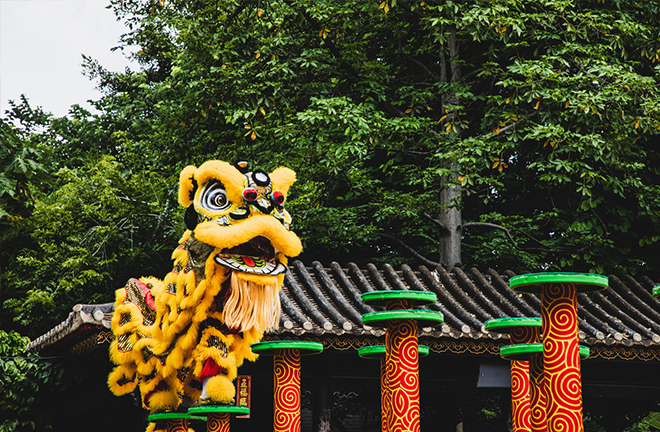Distinctive protection practices revitalize ICH 20 years on

Lion dance, a tradition practiced in south China's Guangdong Province Photo: TUCHONG
This year marks the 20th anniversary of China’s ratification of the UNESCO Convention for the Safeguarding of the Intangible Cultural Heritage (hereinafter referred to as the UNESCO Convention). In late September, an academic forum on the achievements, challenges, and prospects of intangible cultural heritage (ICH) protection in China over the past 20 years was held in Beijing, hosted by Beijing Normal University (BNU). The forum reviewed the fruitful results China has achieved in the theoretical system, practical experience, and disciplinary construction of ICH protection over the past two decades. Scholars also reflected on challenges in the field and put forward suggestions for its future development.
Over the past 20 years, ICH has evolved from an unfamiliar foreign concept to a widely recognized term among Chinese people. ICH protection has also become a social practice throughout the country, closely integrated with major national strategies. Li Xiaosong, deputy director of the Department of Intangible Cultural Heritage at China’s Ministry of Culture and Tourism, asserted that China’s ICH protection practices are characterized by a combination of the spirit of the UNESCO Convention and the country’s specific realities. As a result, an ICH protection system has emerged that aligns with international norms while incorporating China’s distinctive national conditions.
ICH is a significant part of fine traditional Chinese culture and serves as a vivid testament to the continuity of Chinese civilization, bonding the nation and maintaining national unity. Since the 1950s, China has carried out systematic investigation, excavation, collection, organization, and rescue of national and folk traditional cultural items with historical, cultural, and scientific value. By December 2023, China had 43 items on UNESCO’s ICH list, making it the country with the most listings in the world.
ICH protection has exerted far-reaching influence on social culture and the lives of various ethnic groups. Lin Jifu, a professor from the School of Ethnology and Sociology at Minzu University of China, cited the preservation of traditional Chinese tea-making techniques as an example, emphasizing that such efforts have strengthened national cohesion and belonging. The “lion dance,” a tradition practiced in south China’s Guangdong Province, has enhanced the identity of the Chinese nation through its blending into modern life via film, television and cultural creativity.
Addressing the issue of excessive project-oriented approaches to ICH protection, Song Junhua, director of the center for studies on Chinese intangible cultural heritage at Sun Yat-sen University, argued for more holistic and systematic approaches. The construction of cultural and ecological protection experimental zones in China, preconditioned by respect for ICH’s ecological principles, is a response to the dialectical relationship of ICH protection with sustainable development, modern governance, and the live transmission of Chinese civilization.
Since the concept of ICH was introduced to China, Chinese scholars have explored nearly all relevant fields, leading to the formation of an “ICH academic community” featuring the joint participation of multiple disciplines. According to Yang Lihui, a professor from the School of Chinese Language and Literature at BNU, Chinese academia has made outstanding theoretical contributions to the origination, significance, and mechanisms of ICH protection, as well as the clarification of pertinent policies and regulations, indigenous interpretation, in-depth research on heritage protection subjects and objects alongside inheritance rules, transformation and development of ICH resources, and disciplinary construction in the ICH context. She suggested examining ICH and heritage protection as a political, cultural, and social phenomenon based on field studies of protection practices and real demand for protection work.
Edited by CHEN MIRONG
